Content marketing strategy – meaning, elements, steps to build
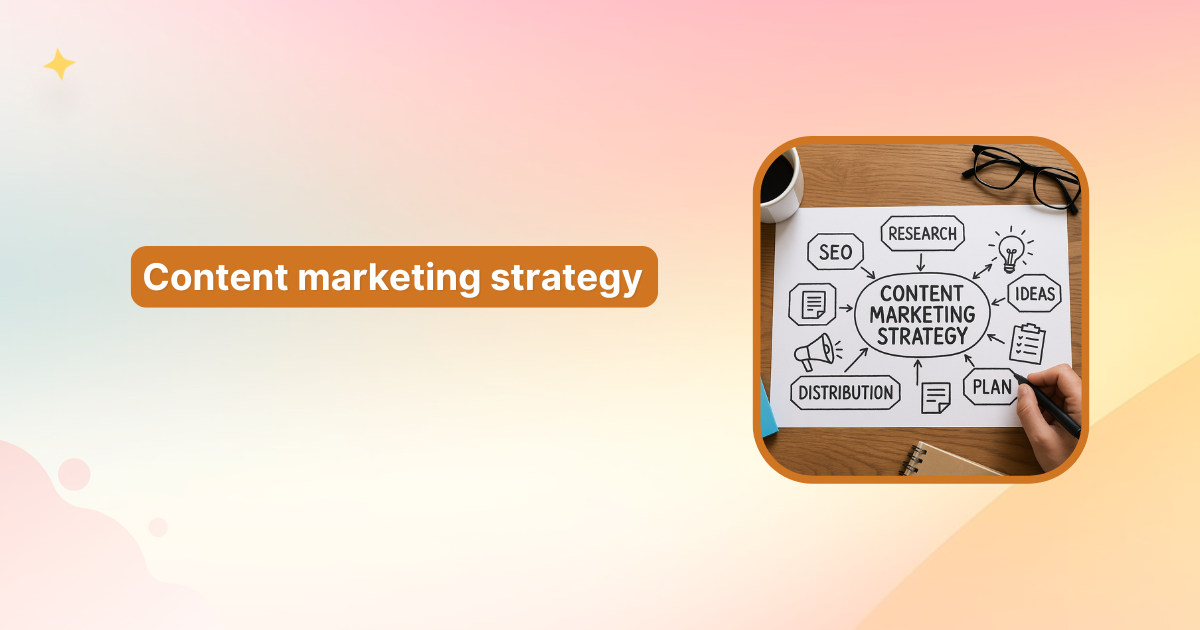
Content marketing has evolved into one of the most powerful ways for businesses to attract, engage, and convert their audiences. Yet, many brands still fall into the trap of creating random content without a clear plan.
The result? Blog posts and social media updates that don’t connect, drive traffic, or generate revenue.
A content marketing strategy solves this problem by giving your brand a structured roadmap, one that aligns with business goals, speaks directly to your audience, and ensures every piece of content works harder for growth.
In this comprehensive guide, we’ll explain what a content marketing strategy is, why it matters in 2025, and how to build one step by step. We’ll also show how Contentpen supercharges the process, helping you scale content marketing without compromising on quality.
What is a content marketing strategy?
A content marketing strategy is more than a to-do list of blog topics. It’s the master plan that connects your business objectives to your content efforts. Think of it as a bridge between your brand and your audience.
At its core, it answers five essential questions:
- What content will we create? Blogs, videos, eBooks, infographics, case studies, whitepapers.
- Who are we creating it for? Define buyer personas with demographics, goals, and pain points.
- Where will we publish it? Website blog, LinkedIn, YouTube, newsletters, and industry forums.
- Why are we creating it? Educate, generate leads, nurture trust, boost sales.
- How will we measure success? KPIs like organic traffic, lead conversions, bounce rates, and time on page.
For instance, a SaaS startup offering project management tools shouldn’t just “write about productivity.” Its strategy would target specific personas (like marketing managers or IT leads), publish content that solves their workflow challenges, and measure conversions through free trial sign-ups.
Why do you need a content marketing strategy in 2025?
The digital content landscape is crowded, and only those with a structured strategy rise above the noise.
Here’s why your brand can’t afford to skip it:
Build brand authority
Audiences don’t trust ads; they trust expertise. When your content consistently educates, you position your brand as an industry leader.
For example, the blog on “Will AI replace writers?” builds authority by tackling a controversial topic with insights that show expertise.
Generate organic traffic
Search engines reward quality, consistent content. By targeting the right keywords and publishing regularly, your blogs attract organic traffic that compounds over time.
Increase conversions
Content written with intent guides readers from awareness to action. For instance, the blog about “how to cut blogging time using AI” educates readers about a challenge, then subtly positions Contentpen as the solution, driving conversions without being “salesy.”
Improve ROI
Without a strategy, content efforts are scattered. With one, every article, video, or case study ties back to measurable ROI. Pair this with automation like, ( how to automate internal and external linking), and you save resources while improving results.
Key elements of a successful content marketing strategy
A strategy must be comprehensive yet flexible. The following pillars ensure success:
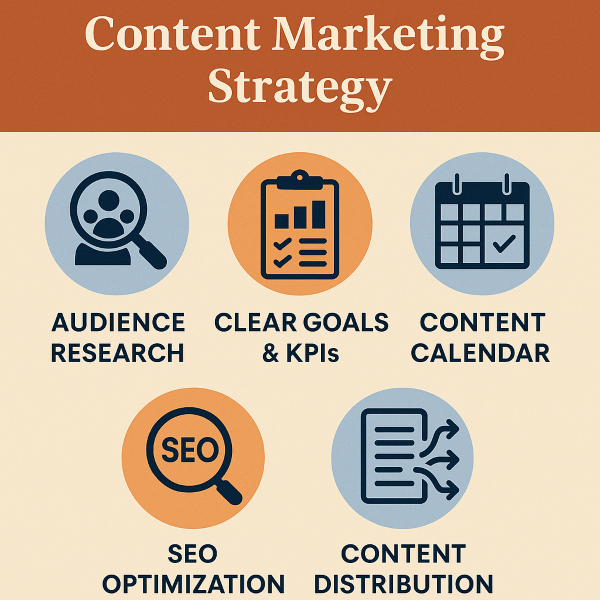
Audience research
The foundation of strategy is knowing your audience inside out. This means building personas based on real data, not assumptions. What questions are they asking? what platforms do they use? And what formats do they prefer?
Clear goals & KPIs
If you don’t measure, you can’t improve. Goals like “increase awareness” should be translated into KPIs, traffic, newsletter sign-ups, or demo requests.
Content calendar
A calendar brings consistency, avoids duplication, and ensures balanced coverage across buyer journey stages.
SEO optimization
SEO is non-negotiable. Using frameworks like the on-page SEO checklist, you ensure blogs are discoverable and rank for target keywords.
Content distribution
Publishing is only half the battle. A strategy includes promotion plans: email blasts, LinkedIn posts, influencer collaborations, or syndication.
Steps to build a winning content marketing strategy
Here’s the proven roadmap for creating a strategy that scales:

Step 1: Define your audience
Take a closer look using surveys, forums, and analytics. Build personas with clear demographics, pain points, and buying behaviors.
Step 2: Conduct a content audit
Review existing assets to identify strengths and gaps. Maybe you already have a strong SEO blog but lack middle-funnel case studies. A post like how to edit AI content could inspire similar improvements.
Step 3: Set SMART goals
Be specific: “Grow organic blog traffic by 40% in six months” is actionable and trackable.
Step 4: Research keywords & topics
Use SEO tools to identify topics that match buyer intent. Long-tail keywords bring in more qualified traffic. For example, the blog “best AI SEO tools,” targets a niche audience actively searching for solutions.
Step 5: Plan your content calendar
Organize content by funnel stage (awareness, consideration, decision). Map formats how-to blogs, videos, or case studies to each stage.
Step 6: Create high-quality content
Your content must balance depth with clarity. Avoid fluff, focus on actionable value. Create content that is useful, engaging, and trustworthy for your audience. It should provide real value, be easy to understand, and stand out from competitors.
Step 7: Optimize for SEO
Strategically place keywords, optimize images, and interlink. Always connect blogs to related resources, e.g., linking a blog on keyword research to types of keywords.
Step 8: Promote across channels
Don’t wait for Google alone. Repurpose blogs into LinkedIn carousels, newsletters, and podcasts.
Step 9: Track and adjust
Measure against KPIs. If blogs drive traffic but not conversions, tweak CTAs or add middle-funnel assets like whitepapers.
Common content marketing mistakes to avoid
Even the best businesses make errors when creating content , but the cost of these mistakes is wasted time, money, and missed opportunities. By recognizing them early, you can refine your approach and ensure your content marketing strategy delivers results.
Publishing content without aligning it to goals
One of the biggest mistakes is creating content just for the sake of it. Without aligning blog posts, videos, or guides to business objectives , such as lead generation, awareness, or conversions , you risk producing content that doesn’t serve a purpose.
Ignoring keyword research
Many brands still publish blogs without proper keyword targeting. This is like building a store in the desert , no matter how great it looks, no one will find it.
Keywords connect your content to what your audience is actually searching for. By skipping this step, you miss out on organic traffic and search visibility.
Writing for algorithms instead of humans
In an attempt to “hack” SEO, some marketers overload their content with keywords, making it unreadable. The result? Search engines may rank it lower, and readers won’t stay on the page.
Instead, focus on clarity, storytelling, and problem-solving while integrating keywords naturally.
Failing to promote beyond the website
Publishing content is just the beginning. If you’re not promoting it through social media, email marketing, LinkedIn posts, or newsletters, you’re leaving visibility on the table.
Relying solely on organic search means your content may take months to gain traction.
Neglecting to refresh or repurpose old content
Many businesses forget that content isn’t “one and done.” Over time, statistics, tools, and best practices change, leaving your content outdated.
Search engines also reward freshness. So, revisiting, updating, and repurposing older blogs can significantly boost rankings.
How Contentpen makes building a content marketing strategy easier and more effective?
Crafting a strong content marketing strategy is complex. It requires aligning business goals, audience insights, keyword research, and SEO best practices while keeping content consistent and engaging.
Contentpen simplifies this process tremendously. It combines advanced AI, SEO intelligence, and brand personalization to help businesses design and execute strategies that actually drive results.
Here’s how it helps:
AI-powered built-in content calendar
Contentpen helps you plan and schedule your entire content plan. With integrated calendar features and AI-suggested publishing times, you can keep your content engine running smoothly, without spreadsheets or separate tools.
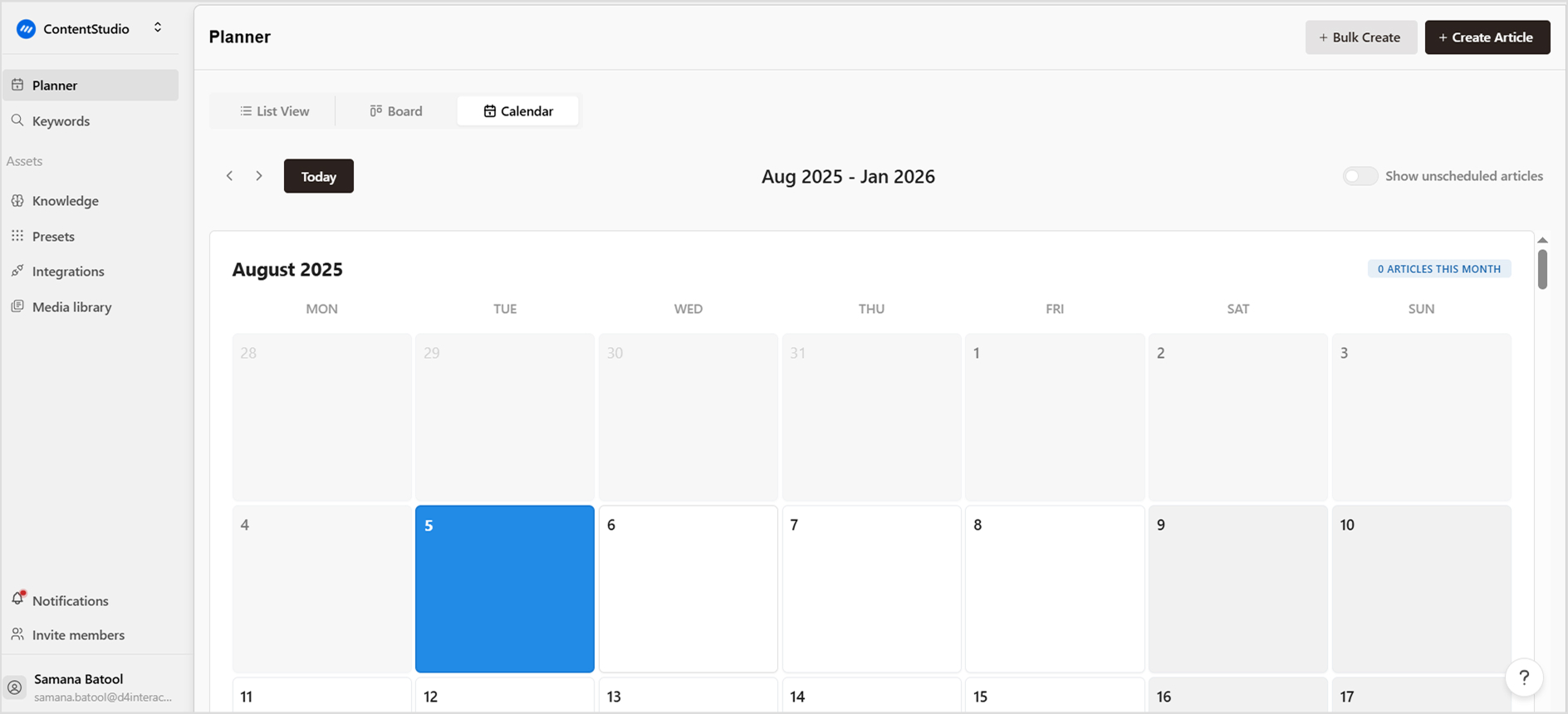
AI-powered outlines
Instead of starting from scratch, Contentpen generates research-backed outlines tailored to your niche, audience, and goals.
Whether you need a thought leadership piece, a product comparison, or an awareness-stage blog, Contentpen has you covered. It structures your content strategy so every piece fits into the bigger picture.
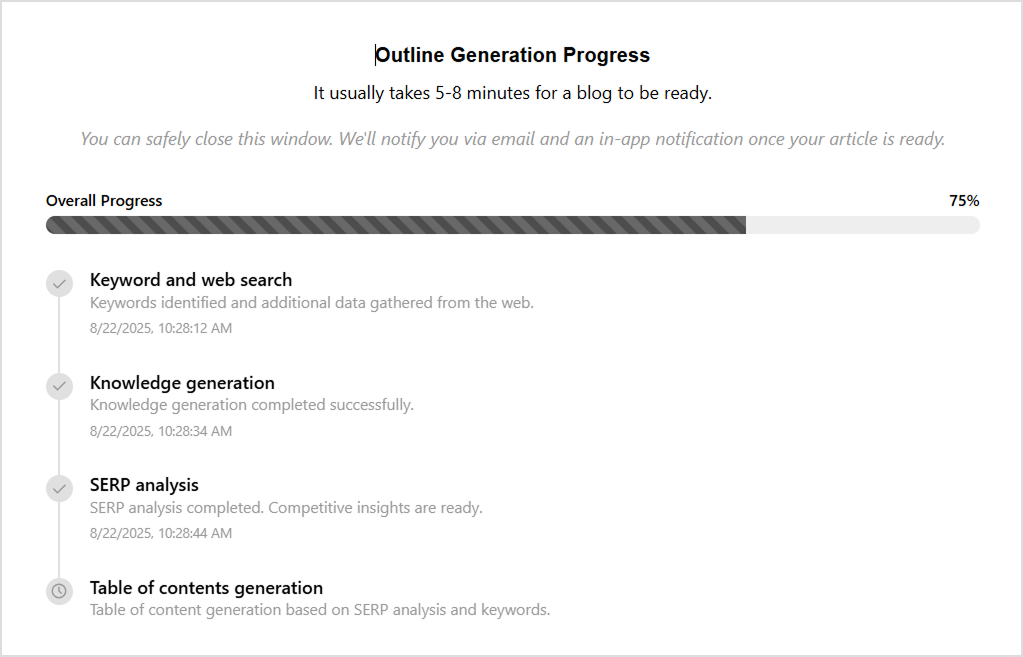
Customizable presets for strategy-driven content
Consistency across blogs, case studies, and newsletters is essential for a brand-led content marketing strategy.
With Contentpen’s presets, you can set formatting and tone guidelines once and apply them across all content types. From how-to guides and listicles to in-depth strategy explainers, your brand voice stays unified and scalable.
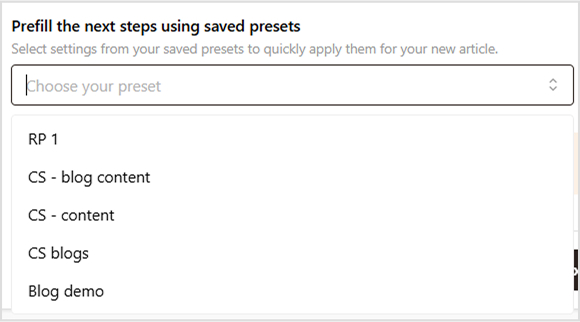
Brand knowledge integration
Every brand has its unique messaging and audience-specific language. Contentpen’s brand knowledge system learns from your existing content, ensuring all new blogs reflect your positioning, tone, and values.
This guarantees that your content marketing strategy doesn’t just look professional, it also feels authentically yours.

Smart keyword & topic suggestions
Successful strategies require covering more than just target keywords; you need topical authority. Contentpen analyzes competitor content and search intent to recommend primary and semantic keywords. This makes your content strategy SEO-driven without losing readability.

Automated internal and external linking
Linking is one of the most overlooked parts of strategy execution. Contentpen automates the linking process by identifying opportunities to connect to both internal blogs and trusted external sources, strengthening SEO and providing readers with a seamless experience.
For example, if your blog covers keyword research, it can automatically link to types of keywords for deeper context.
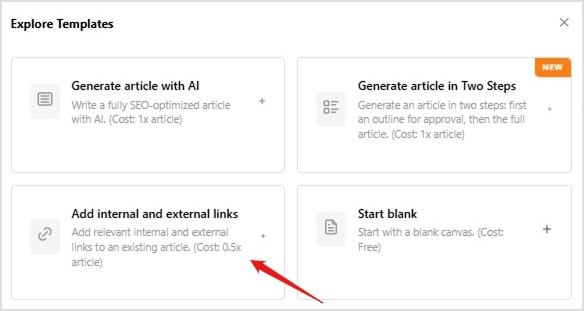
Bulk content creation for scaling strategy
For brands producing content at scale, strategy execution can feel overwhelming.
Contentpen’s bulk article generation feature allows you to create dozens of blogs in one go , each aligned with your chosen themes, SEO framework, and brand guidelines. This makes scaling your strategy fast, cost-effective, and stress-free.
Advanced editing and optimization
Even strong strategies fall short without fine-tuning. Contentpen’s editorial tools enhance your drafts by boosting readability, optimizing for featured snippets, and creating a smooth flow.
With the right mix of depth and clarity, your content doesn’t just get published, it delivers results.
Through these features, Contentpen turns content marketing strategy from a time-intensive process into a streamlined growth engine.
Instead of struggling with planning, formatting, or SEO, your team can focus on what matters most. That means creating meaningful content that builds trust, drives traffic, and turns readers into customers.
Conclusion
A content marketing strategy isn’t optional in 2025; it’s the engine of growth. It helps brands build trust, increase traffic, and convert readers into customers. By combining clear planning with AI blog writer like Contentpen, you not only save time but also create a scalable system for long-term growth.
The brands that thrive in 2025 will be those with a well-documented, data-driven content marketing strategy and the tools to execute it at scale.
You might be interested in...
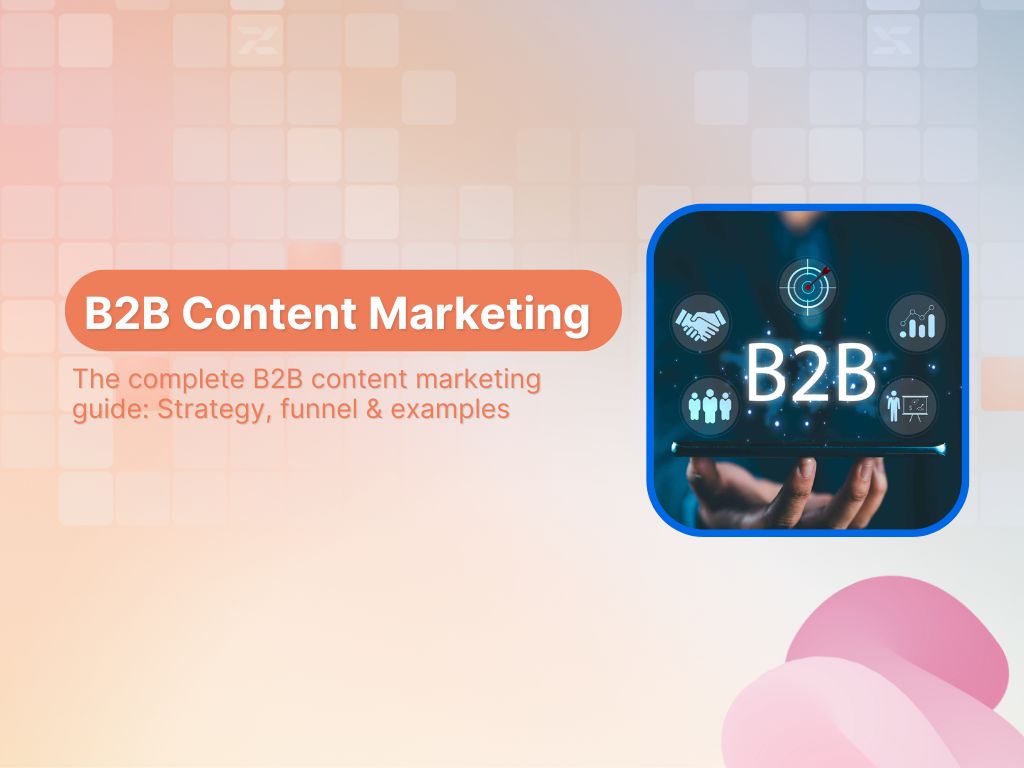
The complete B2B content marketing guide: Strategy, funnel & examples
B2B content marketing is something that can make or break your business. You might already be familiar with its basics, but it is important to discuss it in detail in terms of types, benefits, examples, and strategies to implement a successful B2B content marketing strategy. And if you are wondering why you need B2B content […]
Oct 29, 2025

Content marketing examples that drive results in 2025
Here’s a sobering truth: 96% of content published online gets zero traffic from Google. Zero! Yet the examples you’re about to see generated millions of views, thousands of shares, and drove real business results. What makes them different? They didn’t follow the “publish and pray” strategy! Instead, each one used a specific psychological trigger, solved […]
Sep 29, 2025

What is blogging? The ultimate guide
Should I start my own blog? Is blogging dead? Can I get paid for blogging? What does blogging even mean in this age of AI? These are some of the most common questions associated with blogging, and we’ll be answering all of them in detail to understand what blogging is. Blogging has changed a lot […]
Sep 17, 2025